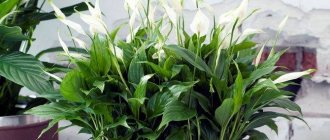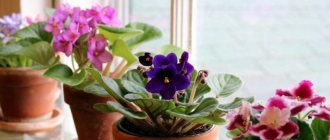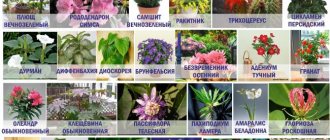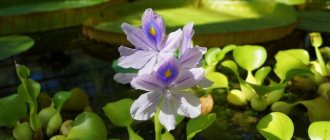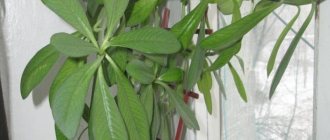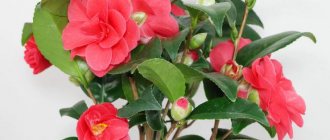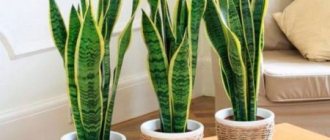Indoor air pollution is caused by insufficient ventilation, humidity, high temperature and toxic products. Thus, all varnishes, paints, adhesives that make up our furniture, plastic products, and cleaning chemicals emit poisonous and toxic substances, which make our homes dangerous.
Fortunately, nature is so wise that it has given us indoor plants that can effectively purify the air. In this article we will tell you about 10 indoor plants that will significantly improve the air quality in your homes and, of course, decorate the interior.
Ivy
Ivy is one of the most popular indoor plants because it grows quickly, is unpretentious, and adds coziness to a room by creating intricate patterns on vertical surfaces.
In addition to aesthetic pleasure, this climbing plant has great benefits for people. It is one of the most effective in absorbing carbon dioxide; it can literally suck fecal microparticles from the air, therefore it is an ideal air purifier for the bathroom and toilet. This is also helped by the fact that ivy can grow in low light conditions.
Ivy is the enemy of mold, so it can be a salvation in damp rooms. It neutralizes the effects of toxins that are released from non-ecological furniture, has antiviral, antibacterial and even anti-allergenic effects, therefore it is an excellent flowerpot for those who have pets.
Common ivy (lat. Hedera)
What it likes: spraying, abundant watering and at least 4 hours of sunlight a day. She also likes to be fed once every two weeks in the summer and once a month in the winter. In summer it feels comfortable at standard room temperatures; in winter, if possible, place your ivy in a cool place (12-15 degrees). At temperatures above 20 degrees in winter, regular spraying is required. Tolerates drafts and sudden temperature fluctuations well.
What she doesn’t like: too dry air, excessive fertilizing (leaves can dry out and fall off). Also, with insufficient lighting, the leaves of variegated ivy, colored with ornaments, may lose their pattern and turn green.
Chrysanthemum
Chrysanthemums, which we are used to in the garden, get along well in home pots, delighting us with abundant blooms in the fall and helping to make the indoor air cleaner. They absorb traces of benzene released from glue, paint and plastic, smoke, rubber and leather products.
It is better to keep chrysanthemums in bright places protected from the wind. Chrysanthemums require regular watering and fertilizing.
Suitable for living rooms, living rooms. Can be placed on a cool, well-lit balcony.
Sansevieria
If you don’t have indoor plants at home, then Sansevieria is a great option to start getting acquainted with them. It grows well and is easy to care for. This plant has long, stiff, dark green leaves with horizontal light stripes and spots. It has a yellowish border along the edges and grows horizontally from thick creeping roots.
We have an excellent article about varieties, propagation and cultivation of Sansevieria
With sansevieria in the bedroom you will sleep well. It releases phytoncides and disinfects the air. According to NASA, it is one of the best houseplants for absorbing toxins that are released into the air, including formaldehyde, nitric oxide, benzene, xylene and trichlorethylene. Sansevieria is also one of the few indoor plants that continue to convert carbon dioxide into oxygen even at night.
Proof that Sansevieria is extremely effective at absorbing chemicals from the air is that it is now used as a natural filter on space stations.
Sansevieria (lat. Sansevieria trifasciata)
What it likes: tolerates any amount of light equally well, but grows better in good light; in the shade it can change color. Requires normal room temperatures, but not lower than 14 degrees. Likes moderate watering, fertilizing once every three weeks.
Related article:
Features of watering zamioculcas: how to maintain a bright and healthy appearance
What it doesn’t like : waterlogging, as the roots are prone to rotting in wet soil.
Bamboo palm (Hamedorea)
With proper care, a palm tree can grow up to 2 meters, and its exotic appearance will transform any room.
Bamboo palm tops the list of best plants for removing benzene and trichlorethylene from the air.
The palm tree loves warmth, humidity and diffused light, and to maintain the symmetry of the crown it is necessary to rotate the pot with the plant around its axis approximately once every three months.
The palm tree will feel good next to furniture.
Peperomia obtufolia
This flowerpot is very popular in room decoration. It has dark green leaves of a round shape with arched veins. Although its homeland is North Africa, peperomia grows well in our area and is quite unpretentious to the conditions, which is why novice gardeners love it.
Fleshy greens store moisture well, which is why peperomia is considered one of the hardiest indoor plants. It purifies the air from harmful impurities, including formaldehyde, benzene and other toxins, while simultaneously releasing phytoncides. Has antibacterial and antiviral effects. Peperomia is one of the indoor plants that most actively release pure oxygen.
Peperomia obtusifolia (lat. Peperomia obtusifolia)
What it likes : slightly acidic, loose soil, replanting at least once every three years to prevent the roots from rotting. Comfortable temperature - 20-25 degrees, likes abundant watering once a week, regular spraying and fertilizing.
What it doesn’t like : stagnation of water, drafts and cold, otherwise the edges of the leaves begin to turn yellow and the plant slows down growth or stops developing. Also, peperomia does not like direct sunlight, because in its homeland it grows in the lower tier under higher plants.
How can plants purify the air?
Plants decompose organic pollutants, absorbing them from the air into inorganic, harmless compounds. The resulting substances accumulate in plant tissues or are released in a harmless form.
Anthurium Scarlet
There are many best air purifiers among the many plants. They are capable of absorbing not only carbon dioxide from the air, but also toxic formaldehyde, benzene and other harmful substances.
Scientists have studied the ability of various plants to purify air to create space stations on the Moon and Mars. All plants have this ability to varying degrees.
Aloe vera
Aloe is one of the plants whose healing properties are widely known. Typically stemless or very short stemmed, with thick green and fleshy leaves that grow directly from the central stem of the plant. The edges of the leaves are covered with small teeth.
Aloe not only has a luxurious appearance, but is also a very easy to care for houseplant. It is a succulent, so it does not require frequent watering. This plant can be a wonderful decoration for a kitchen window sill. Then it will always be at hand in case of any injuries during cooking, because the gel inside the leaves has healing properties against burns, cuts and many other skin problems.
Related article:
An unusual flower for the home without any problems: I fell in love with it in 2018!
Aloe also purifies the air from formaldehyde and benzene contained in varnishes, paints, detergents, materials from which furniture is made, and the like. This home plant absorbs carbon dioxide and abundantly enriches the air around it with oxygen.
Aloe vera (lat. Aloe vera)
Note! Aloe vera leaf gel can be used topically, but avoid ingesting it into people or animals. This may cause unpleasant symptoms such as nausea or diarrhea.
What it likes : aloe feels comfortable in a sunny place, at standard room temperatures from +13 to +27°C. From May to September you can safely keep aloe outside. The pot should have at least one drainage hole at the bottom to allow excess water to drain away. Also, if the aloe has a stem, choose a container deep enough so that the entire stem can be planted in the soil.
What it doesn’t like : direct sunlight, it dries out the leaves too much and the aloe turns yellow. It also does not like excessive watering, like all succulents, because due to excess water the roots can rot. Therefore, in winter it is worth watering aloe vera once every 3 weeks or even less often.
Our article about how to grow aloe from a leaf
Recommendations for owners
If plants from the above list already decorate your home, take a closer look at more exotic options. For example, laurel would be an excellent purchase . It also releases substances that fight germs. Laurel also has an excellent effect on the human lungs and protects our body from respiratory pathologies. It will be useful for your lungs to have asparagus at home. People often call it “herringbone”. And myrtle (very pretty, by the way) helps with respiratory diseases and even relieves asthma attacks. True, you shouldn’t get carried away with such plants either; you don’t need to move everything from the list home. At high concentrations, the pronounced aroma of plants can lead to headaches.
All that remains is to think over the decorative scheme: plants can decorate not only window sills, but also shelves, racks, modular walls, cabinets and chests of drawers. And at the same time create incredibly attractive, harmonious combinations.
Useful tips
- Try to place at least one indoor plant in the house in a pot with a diameter of at least 15 cm for every 10 m2 of room.
- To improve air quality, it is better to group indoor plants rather than placing them individually.
- To achieve maximum results, it is recommended to free the leaves of indoor plants from dust or give them a shower (depending on the specific type of plant).
- The use of filters additionally introduced into the soil contributes to more effective air purification. For example, activated carbon placed in a pot with a plant enhances its overall cleansing properties.
- If you have children or pets in the house, when purchasing any plant you need to make sure it is safe.
- If there is an allergic or asthmatic person in the house, then before adding indoor plants, consult an allergist, because Mold can grow in the soil, aggravating the course of diseases.
Sources
- https://rastenievod.com/komnatnye-rasteniya-ochishhayushhie-vozduh.html
- https://stroy-podskazka.ru/komnatnye-cvety/ochishchayushchie-vozduh/
- https://www.Elle.ru/krasota/zdorove/kakie-rasteniya-ochischayut-vozduh/
- https://azbyka.ru/zdorovie/komnatnye-rasteniya-ochishhayushhie-vozdux
- https://VentilyaciyaDom.ru/kvartiry/komnatnye-rasteniya-ochishhayut-vozduh.html
- https://ogorodlegko.ru/cvety/komnatnye-cvety/205-komnatnye-rastenija-dlja-ochistki-vozduha.html
- https://domovodstvo.pro/uyutnyj-dom/cvety-ochishchayushchie-vozduh-v-kvartire/
- https://nature-time.ru/2014/06/luchshie-komnatnyie-rasteniya-ochishhayushhie-vozduh/
[collapse]
Chlorophytum crested
Chlorophytum is one of the most popular houseplants. This is a small beautiful plant in the form of a rosette-tuft. Leaves with yellowish edges bend beautifully from the center in different directions, releasing baby plants. It blooms with white flowers. Grows quickly, usually up to 20-30 cm. Looks beautiful in the interior when hanging and creating cascades.
Chlorophytum is so hardy that even if you're not a fanatic gardener and tend to forget about your indoor planters, you'll have a hard time starting this tough plant.
According to NASA, chlorophytum is one of the three best indoor plants, as it perfectly purifies the air from formaldehyde, carbon monoxide, benzene, carbon monoxide and xylene, a solvent used in the leather, rubber and printing industries. It is also useful in areas where people smoke because it is one of the best filters against cigarette smoke. As an added bonus, this houseplant is safe for pets.
Related article:
Sansevieria - description of the plant and the most beautiful varieties
Chlorophytum crested (lat. Chlorophytum comosum)
What it likes: The plant is unpretentious, but grows best in bright indirect light, cool room temperatures and relatively dry soil. Artificial light suits her and is also tolerant of shade, but slows down her growth and development. Requires abundant watering in summer, moderate in winter. Feeding - once a month, sometimes you need to spray.
What she doesn't like: Direct sunlight.
Scindapsus
Scindapsus, also known as Epipremnum aureus, has many varieties with leaves ranging from whitish-green to bright lime-yellow.
This is another assistant in purifying the air from exhaust gases and cigarette smoke.
Scindapsus is especially effective in rooms located in industrial areas or whose windows overlook the roadway.
Scindapsus remains green even in low light conditions, so it can be used to decorate a hallway, dressing room, or garage.
Ficus benjamina
This is a beautiful and popular houseplant with slender branches that curve gracefully from a light gray trunk or several. They can be intertwined for decorative appeal. The leaves are dense and can be of different colors: dark green or with light spots.
Ficus is an excellent filter against allergens, dust, and many air pollutants. It actively absorbs harmful gases (especially effectively purifies the air from acetone, benzene and trichlorethylene).
If you have pets or small children, make sure they do not eat ficus leaves. This is not life-threatening, but may be irritating.
Ficus Benjamin (lat. Ficus benjamina)
What it likes: watering once a week with water at room temperature (especially in winter) so that the soil is always slightly moist. Ficus also likes to be fertilized once every 2 weeks. Loves good diffused lighting (even a little direct sunlight in the morning), normal room temperatures, but not lower than 16 degrees.
What it doesn’t like: drafts, wind and excessive watering. Wet or poorly draining soil causes roots to rot, and lack of watering harms the plant and causes leaves to drop. Doesn't like being moved. In this case, the plant may fall into “stress”, which causes the leaves to fall off.
Azalea
Azalea is distinguished by its unusually beautiful and long flowering. This plant also helps clean the air from vapors of harmful chemicals that are used in gluing plywood and making insulating foam.
Requires regular watering, but without stagnation of water at the roots, prefers a high level of humidity - spray the leaves, loves light, but without direct rays of the sun.
It is better to keep azaleas in a cool, draft-free room.
Spathiphyllum
This beautiful flowering houseplant is popular for its ease of care. The leaves are basal, oval or lanceolate in shape with a strongly protruding central vein. Blooms in April-July. White flowers are located on high stalks.
NASA research has found that spathiphyllum is very effective at filtering volatile organic compounds, which include formaldehyde, trichlorethylene and benzene.
Attention! Ingestion of any part of this plant may cause nausea, difficulty swallowing, or a burning sensation in the mouth or skin.
Spathiphyllum (lat. Spathiphyllum)
What it likes: a large amount of diffused sunlight, in the shade the leaves become elongated and change color to dark green, and flowering lasts a shorter time or does not occur at all. Likes air temperatures between 18-22 degrees, in winter it can be dropped to 16, but not lower. Regular watering (more in summer than in winter), always with settled water (at least 24 hours). It loves high air humidity and needs constant spraying, but when flowering, water should not get on the buds. Feed once a week in summer and autumn, once a month in winter.
Related article:
Why pinch the money tree and how to do it correctly
What it doesn’t like: drafts, direct sunlight, it can cause leaf burns. It does not like the soil to dry out; the leaves begin to dry out and droop. Excessive watering also harms the plant. Due to stagnation of liquid, dark spots appear on the leaves, and the plant may even die.
Ofazende.ru recommends: Spathiphyllum - care and cultivation at home
Gerber Jameson
Gerbera belongs to the Asteraceae family and has several dozen species, but only Jameson's gerbera is grown at home.
This plant effectively removes trichlorethylene, which can be in the air after cleaning - it is found in many cleaning products.
Gerbera loves warmth, bright diffused light and moderate watering. Moreover, it is necessary to ensure that water does not get into the leaf rosette, otherwise rotting will begin.
You can place gerberas on window sills facing east or west.
Dracaena marginata or Dracaena marginata
A plant with a wooden elongated stem and leaves 30-45 cm long and 1-2 cm wide. The leaves are collected at the top, mostly green, but there are varieties with yellow or red stripes. Dracaena fringe is perfect for the home and office, bringing tropical exoticism to it.
And most importantly, it effectively absorbs any substances released by varnishes, paints, building materials, glue, decorative coatings, and the like. Dracaena is able to absorb up to 70% of dangerous impurities from the air and disinfects it.
Dracaena marginata or Dracaena marginata (lat. Dracaena marginata)
What it likes: Dracaena likes to grow in a bright place. It is easy to care for: if you water it once a week, that will be enough. From April to August, the plant can be fertilized once every 2 weeks.
What it doesn’t like: drafts, as well as location near open doors or windows. Too much water causes the roots to rot.
What harm can dangerous compounds cause?
Formaldehyde is a toxic, colorless gas. It stands out from chipboard and plastic. Leads to allergic reactions and has a detrimental effect on the respiratory, nervous and visual systems.
Trichlorethylene is found in household cleaning products. Negatively affects the liver and vision, causes skin irritation. Toluene vapors cause inhibition and disturbances in the hematopoietic system. And benzene, which is released by varnishes, paints and rubber, affects the respiratory system and nervous system.
Therefore, by filling the room with various flowers and plants, you can reduce the amount of harmful substances in the room to a minimum.
Anthurium
Anthurium is a little capricious plant, but it's worth it. Anthurium leaves are usually rich green, large, heart-shaped, on long slender stems. The flowers of this plant are amazing: white, pink or red, shiny, like wax. Red anthuriums are also called "fire tongues" for their bright red, shiny, heart-shaped flowers.
Thanks to its luxurious appearance, anthurium makes any room feel homely. As long as the plant gets enough light, it will bloom all year round!
Anthurium is listed by NASA as a plant that effectively purifies the air. Its large, dark leaves absorb ammonia, formaldehyde, toluene and xylene. It can also reduce electromagnetic radiation, so it is useful to place it in areas where household or multimedia equipment is located.
However, beware: the plant's sap and leaves may cause allergies in sensitive people.
Anthurium (lat. Anthurium)
What it likes: lots of indirect sunlight, high humidity, abundant watering. Ideally, it should be placed near a window, at a temperature between +18 °C and + 21 °C. It needs to be replanted every year in a pot with a hole in the bottom. It is necessary to actively fertilize in spring and summer.
Related article:
4 common and serious mistakes in caring for the Decembrist
What it doesn’t like: drafts, dry air, so the leaves, or better yet the air around them, need to be sprayed regularly. Does not like excessive watering, this can lead to damage to the roots and yellowing of the leaves.
Philodendron
Two species are considered the most effective for air purification: climbing philodendron (Philodendron scandens) and home philodendron (Philodendron domesticum), also known as spear-shaped philodendron (Philodendron hastatum).
Philodendrons can handle high concentrations of formaldehyde, xylene and other toxic compounds.
It is best to place the plant at home in light partial shade, where direct sunlight does not fall. Philodendron does not like drafts. The plant requires moisture - frequent spraying of the leaves is necessary, and should not be watered in excess.
The plant, since it is poisonous, should be kept where pets or children cannot reach it.
Zamioculcas
Zamioculcas grows up to 40-60 cm in height, has a powerful root that is able to retain moisture and survive long periods without watering. It has wide, smooth, shiny dark green leaves. Blooms from mid-summer to early autumn. The flowers are small (5-7 cm long) and tend to vary in color from bright yellow to brown or bronze. The flowers tend to be hidden among the stems of the leaves and are not usually considered particularly attractive.
We have a detailed article about the Zamioculcas flower
The extraordinary value of zamioculcas is that it makes indoor air much better - it is able to remove significant amounts of xylene, toluene, benzene and ethylbenzene from the air.
Keep in mind that zamioculcas is poisonous; if it enters the body, it can cause irritation, and in large quantities it can be fatal. In general, it is best to touch them with gloves. If you have pets, be careful to keep them away from the vet.
Zamioculcas (lat. Zamioculcas zamiifolia)
What it likes: a lot of bright indirect light, direct light for a short time in the morning. But it can also grow in rooms without windows, in which case artificial light must be provided. It grows best at temperatures between +18°C and +26°C, preferably not allowing temperatures below +15°C. The warmer it is, the more intense the leaves grow. Feed no more than once a month with a weak solution. Water only when the soil is almost completely dry.
What she doesn’t like: overwatering can cause the roots to rot; it is better that such indoor plants receive insufficient watering rather than too much water. Zamioculcas survive even for months without water, but grow faster if watered regularly.
Choosing indoor plants that purify the air
In enclosed spaces, where people spend most of their lives, the air is polluted with toxic gases, dust and is not suitable for breathing.
Orchid (Dendrobium)
Here are some of the harmful substances it contains:
- formaldehyde
- xylene
- toluene
- benzene
- ammonia
- alcohols
- acetone
Pollutants include interior items, furniture upholstery, wallpaper, floor coverings, carpets, and household chemicals. Harmful bacteria and viruses fly in the air, causing respiratory diseases and allergies. Interestingly, indoor plants selectively absorb gases, this can be seen in the table.
Which is the best for an apartment?
In a city apartment, especially if it has a small area, it is best to grow miniature plants that do not take up much space. These could be, for example:
- chlorophytum;
- pelargonium (indoor geranium);
- Sansevieria (mother-in-law's tongue);
- gerbera;
- begonia.
Attention! It is best to place these plant varieties on a windowsill, so they will receive a sufficient amount of ultraviolet radiation. And if there is a heating radiator nearby, in winter it is better to sometimes cover it with a damp cloth, this will create an optimal humidity level for the flowers.
Larger plants, such as citrus trees, cypress, bamboo palm or ficus benjamina, are recommended to be grown in more suitable conditions, for example, in country houses or large apartments.
Geranium
Not everyone loves the smell of geranium (pelargonium). Nevertheless, the benefits of this indoor plant are undeniable: the essential oils it produces have a powerful bactericidal and calming effect. In an office space, geranium improves the health of the air, protecting employees and visitors from pathogenic microorganisms, and in an apartment it helps its owners get rid of nervous tension and insomnia.
Source: depositphotos.com
